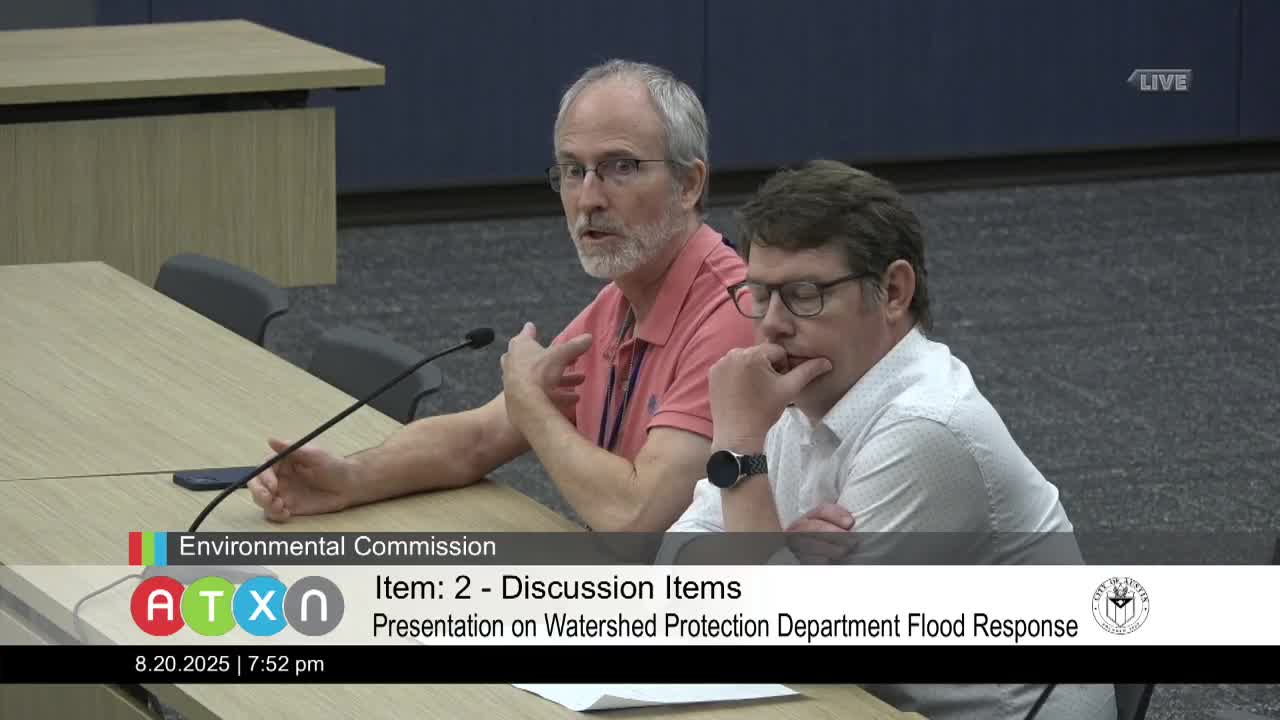Austin Updates Floodplain Regulations to Enhance Compliance and Safety Measures
August 20, 2025 | Austin, Travis County, Texas
Thanks to Scribe from Workplace AI , all articles about Texas are free for you to enjoy throughout 2025!

This article was created by AI using a video recording of the meeting. It summarizes the key points discussed, but for full details and context, please refer to the video of the full meeting. Link to Full Meeting
The last updates to floodplain maps varied by creek, with Onion Creek receiving a new map in 2020. However, some areas, like Bull Creek, have not seen updates in decades. The commission emphasized the importance of comprehensive mapping, as FEMA encourages communities to assess entire watercourses rather than piecemeal updates. This approach aims to provide a clearer picture of flood risks across the region.
Austin's floodplain management regulations include a "freeboard" requirement, which mandates that new developments be built at least one to two feet above the base flood elevation. This standard exceeds FEMA's minimum requirements, reflecting the city's commitment to proactive flood risk management. Changes to these regulations are communicated to FEMA, and the city undergoes audits every five years to ensure compliance and efficiency.
The commission noted that while updates to regulations are not bound by a strict schedule, they are prepared to make changes as needed. For instance, in 2019, the city adopted new regulations in response to updated rainfall data, which indicated that what was previously considered a 100-year storm could now be viewed as a 500-year event.
Looking ahead, the commission is awaiting the completion of a draft study on rainfall patterns, expected by the end of this year, with a final report anticipated in 2026. This study will inform any future updates to floodplain regulations.
In addition to mapping and regulatory updates, the commission discussed monitoring compliance with the substantial improvement rule, which requires that any residential building permit applications within 100 feet of a mapped floodplain undergo a thorough review. This ensures that all developments adhere to the established floodplain regulations, enhancing community safety and resilience against flooding.
As Austin continues to adapt to changing environmental conditions, these proactive measures in floodplain management are crucial for safeguarding residents and infrastructure from future flooding risks.
Converted from Austin - Environmental Commission meeting on August 20, 2025
Link to Full Meeting
Comments
View full meeting
This article is based on a recent meeting—watch the full video and explore the complete transcript for deeper insights into the discussion.
View full meeting
